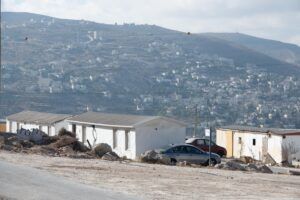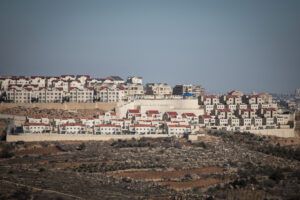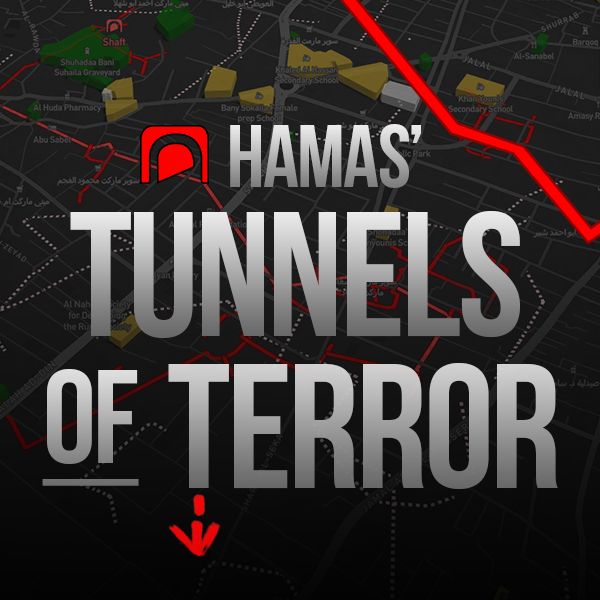Whether in the mainstream media, academia or a casual conversation among friends, any discussion of Israeli politics inevitably throws up the issue of “Israeli settlements.”
But while the term “Israeli settlements” has entered the popular lexicon, how much does the average person really know about them?
Let’s take a look at the history of the Israeli settlements from their genesis in 1967 until today.
The First Settlements (1967-1968)
In June 1967, Israel fought a defensive war against the armies of Egypt, Jordan and Syria. After six days of fighting, the Israel Defense Forces (IDF) emerged victorious and not only pushed back the enemy militaries from its frontier but also gained control over large swathes of territory: the Sinai Desert and Gaza Strip from Egypt, the Golan Heights from Syria, and eastern Jerusalem and the West Bank from Jordan.
Soon after the war ended, Israelis began to undertake grassroots initiatives to establish communities in these new territories. These Israelis viewed this community-building as a continuation of the pioneering spirit that had infused the Jewish community before the creation of the State of Israel.
Most of these early settlements, which were few in numbers, were established in areas that were designated as being of strategic value by the Alon Plan.
Related Reading: How Strong is the Jewish Claim to the West Bank?
The Alon Plan, which was conceived by the Israeli Minister of Labor Yigal Alon between June and July 1967, was a program whereby Israel would maintain control over certain parts of the West Bank (primarily the Jordan Valley, Gush Etzion and eastern Jerusalem) in order to protect itself from future Jordanian attacks. The rest of the territory would either go to Jordan or a Palestinian administration.
In the eyes of the Alon Plan, the newly founded settlements would serve as advanced positions that would help secure these new defensible borders.
In addition to security considerations, some of the early settlements were established on the sites of Jewish communities that had been depopulated during periods of violence, particularly during the Arab insurgency (1947-1948) and the Israeli War of Independence.
For example, Kibbutz Kfar Etzion, one of the first settlements to be established, was set up in September 1967 by children of the original residents of the kibbutz, who had largely been killed in a Jordanian-led massacre in May 1948.
Related Reading: In Focus: The Jordan Valley as Israel’s Strategic Line of Defense
The Second Wave of the Settlements (1968-1980)
In 1968, a group of religious families attempted to set up a community in the ancient city of Hebron, which had been emptied of its Jewish population following the 1929 Hebron Massacre. This group ultimately became the nucleus of the nearby settlement of Kiryat Arba and, later, the re-established Jewish community of Hebron.
This attempt heralded the “second wave” of settlement building, which was more ideologically driven and viewed the establishment of Jewish communities as a national and religious imperative, due to the status of Judea and Samaria (the traditional Jewish name for the West Bank) as the birthplace of the Jewish people.
In 1974, the Gush Emunim (“Bloc of the Faithful”) movement was officially established as a grassroots organization that would work towards setting up new Jewish communities across Judea and Samaria.
Following the election of Menachem Begin’s right-wing government in 1977, the Israeli government became more amenable to the establishment of Jewish communities across the West Bank.
However, this does not mean that Israelis were given carte blanche to set up settlements anywhere they saw fit. In a now-famous 1979 incident, the Israeli government was compelled by the Supreme Court to move the nascent community of Elon Moreh six miles (10 kilometers) down the road following an appeal brought by Arab residents of a nearby village.
Related Reading: Israel: Constitutional Revolution Without a Constitution
Settlement Growth, Settlement Freezes & Settlement Destruction
Since the 1970s, there have been periods of settlement growth within Judea and Samaria as well as periods of construction freezes, particularly during periods of peace negotiations with the Palestinians and other neighboring Arab countries.
Due to the freeze on founding new settlements since the Oslo peace process, outposts were built by those who wished to create new communities in Judea and Samaria but did not have the permission of the Israeli government. Since the mid-1990s, several of these outposts have been recognized by the Israeli government as official settlements.
On occasion, the Israeli government has also uprooted Jewish communities in the West Bank, including four that were dismantled as part of the disengagement from Gaza in 2005 and the Amona settlement that was evacuated between 2006 and 2017.


For further information on settlements, outposts, and settlement blocs, see Blocs, Towns & Outposts: What Are the Settlements?
Liked this article? Follow HonestReporting on Twitter, Facebook, Instagram and TikTok to see even more posts and videos debunking news bias and smears, as well as other content explaining what’s really going on in Israel and the region. Get updates direct to your phone. Join our WhatsApp and Telegram channels!
Photo Credit: AHMAD GHARABLI/AFP via Getty Images


